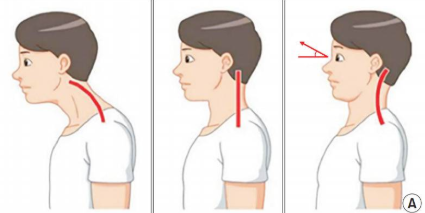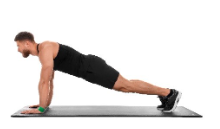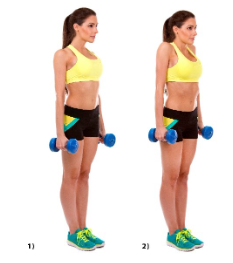
It Doesn’t Have to Hurt So Much! Here’s How to Stop Screen-related Neck Pain…
You’ve put in a good productive day at work, but the price for all that concentration is a literal pain in the neck. Now that it’s time to relax you can really feel the pain at the base of your neck. For many of us, that is accompanied by shoulder tension or even numbness. And, of course, you get to start all over tomorrow.
Not to worry! We’ve got your back (literally) with some stretches designed to make you feel better and some even more helpful tips on how to eliminate that pain in your neck for good.
It turns out all the mothers who nagged their children to “stand up straight” were right. Neck pain is most often caused by poor posture, whether we are sitting, standing, or walking. It may be hard to imagine but if we all had perfect posture, we would have no pain, no matter how long we sat in front of a computer, or how much we carried around.
There are four main postural problems almost guaranteed to cause neck and shoulder pain.
- Forward Head Posture: Occurs when the head juts forward, placing strain on the neck and upper back muscles. Many of us walk this way, especially when we are carrying things as we go.
- Tech Neck: A close cousin to forward head posture, tech neck is caused by excessive screen time, and is a leading cause of neck strain and discomfort.
- Slouched Shoulders: Rounded shoulders contribute to poor spinal alignment and neck tension. This is the posture our moms hated.
- Lopsided Loads: Many of us carry computer bags or tote bags, which completely sets our bodies off balance and places additional stress on one shoulder or another.
To get rid of the neck pain you already have, you need to stretch and realign your head with your body. These stretches and exercises will give you relief and help your posture a bit at the same time.
Gentle Stretches and Exercises for Neck Pain Relief:
- Neck Retraction (A): Keep your head and eyes level and your body still. Move your head back on your neck as if you were pulling back from something distasteful. Feel the tension at the back of your neck and release. Repeat for 10-15 repetitions.

- Upper Trapezius Stretch: Bring one ear towards the shoulder, feeling a stretch along the side of the neck. Hold for 20-30 seconds, then switch sides. The longer you hold these stretches, the better you will feel, honestly.
- Shoulder Blade Squeeze (B): Sit or stand with arms at your sides. Squeeze your shoulder blades together, then release. Repeat for 10-15 repetitions.

- Chin Tucks: Sit or stand tall. Tuck your chin towards your chest, creating a double chin. Hold for a few seconds, then relax. Repeat 10-15 times.
- Upper Back Extension: Stand with hands on hips or clasped behind your back. Gently arch your upper back, lifting your chest towards the ceiling. Hold for 20-30 seconds. Again, holding the stretch is key.
How to Avoid Future Neck Pain
Once you get rid of your acute pain, you might want to see what you can do to avoid it altogether. This comes down to proper posture and the strength to keep yourself aligned.
- Proper Alignment: When sitting, it’s important to keep your head aligned over your spine, rather than jutting forward. This reduces the strain on your neck muscles.
- Screen Height and Distance: The top of your computer screen should be at eye level and about an arm’s length away. This positioning helps avoid tilting or turning your head too far up, down, or to the side, which can strain your neck.
- Chair and Desk Setup: Use a chair that supports your lower back, and make sure your feet can rest flat on the floor or on a footrest. The height of your chair should allow your thighs to be parallel to the floor. If the chair is too high or too low, it can force you to angle your neck awkwardly. Meredith Nothel, a physical therapist from Spear in New York City, says it’s not just your legs that need to be at right angles. “When you are sitting at a desk working, the height of your chair and workstation should allow your arms to be at right angles. If you are too low, you will strain your shoulders. If you are too high, you’ll lean forward and strain your neck.”
- Ergonomic Enhancements: Consider using ergonomic accessories like a document holder, which can prevent you from constantly looking down or to the side to reference printed materials.
These adjustments help distribute the stress of sitting more evenly across the body, reducing the load on any single muscle group, including those in your neck. Regularly changing your position and maintaining a well-set-up workspace can go a long way in preventing and reducing neck soreness.
It’s not easy at first to maintain good posture all day. So, give yourself periodic breaks (it’s good practice to stand every hour anyway). Periodically stand up, stretch, and move around. Staying in one position for too long can cause muscle stiffness and discomfort.
Strengthening Your Posture Muscles
Incorporating weight-bearing exercises into your routine can help benefit neck health and posture. These exercises help strengthen the muscles that support your neck and spine, reducing the risk of strain and improving your overall posture.
- Planks: Planks (we mention these often) are excellent for strengthening the core muscles, including those in the neck and upper back. Maintaining a plank position engages the muscles that support proper spinal alignment, promoting better posture over time.

- Shoulder Shrugs: This simple exercise involves lifting your shoulders towards your ears, holding for a few seconds, and then releasing. Shoulder shrugs help relieve tension in the neck and upper back while improving posture by encouraging the shoulders to stay down and back. Shoulder shrugs can be done with or without dumbbells. Start without and work your way up.

- Resistance Band Pull-apart: Using a resistance band, hold it in front of you at shoulder height with your arms extended. Pull the band apart by squeezing your shoulder blades together, then return to the starting position. This exercise targets the muscles of the upper back, promoting better posture and reducing neck strain. Resistance bands range from light to heavy, and you can purchase a pack of resistance bands online or in a sporting goods store. Start slow, then build your way up to greater resistance.

The Bottom Line on Neck Pain
The neck pain that comes from prolonged screen time can ruin a productive day. There are targeted exercises and stretches that can help you feel better. But the key to staying pain-free lies in establishing and maintaining good posture while working and walking.
Simple strengthening exercises can go a long way towards helping you keep yourself aligned during any activity. And improved posture has some extra benefits as well. Studies show that proper posture promotes better breathing, circulation and mental clarity. Addressing posture now can also help prevent long-term musculoskeletal problems and injuries as we age.
So, give these tips a try. Your neck and shoulders will thank you for it!